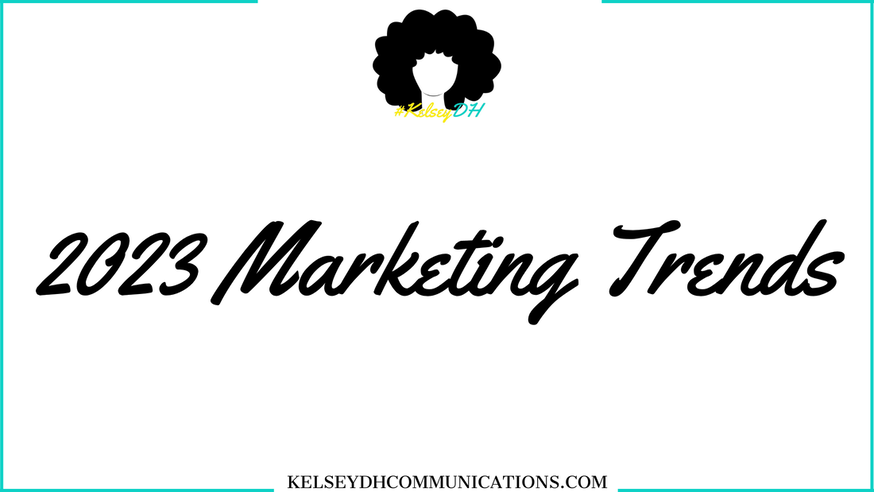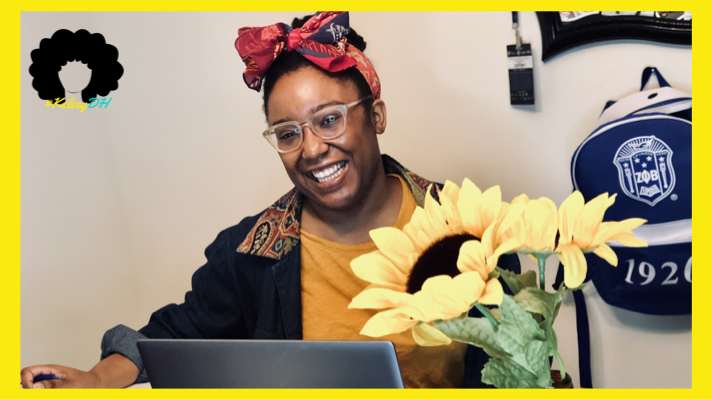|
As we move into 2023, it's important for your team to keep up with the latest marketing trends if you want your business to stay competitive and effectively reach your target audience. Here are five marketing trends that are expected to take off in the coming year:
Overall, 2023 is shaping up to be an exciting year for marketing, with a focus on personalization, interactive content, video marketing, influencer marketing, and social media. By staying on top of these trends, your business will be well-positioned to succeed in the coming year. Networks like MimConnect, The CCYN Network and ColorComm are all collectives I follow consistently to find resources for Black communications professionals across the country to continue growing and learning together. When I saw that ColorComm was hosting a virtual conference, I quickly signed up. More than 2,000 other professionals had the same idea and on Tuesday, June 30, we hopped on Zoom to spend a full day learning from a host of women in leadership about the climate of our country. It was the best 8-hour workday ever. Speakers offered up advice and shared resources on how we can take action and influence justice, equity, diversity and inclusion where we work. Let’s dive into the lessons I learned. Read between the lines onlineSpeaker: Body Language Expert Linda Clemons Linda Clemons was the perfect start to my day. She taught us all about body language and how to show up online. I’m now questioning my posture and tone of voice during Zoom meetings. She also pointed out how to detect someone’s level of interest in what you’re saying through the nonverbal language of body posture.
“When you show up truthfully you will appear to be authentic because you are your true self.” The role of the chief diversity officerPanelists: Melonie Parker, Chief Diversity Officer - Google; Trisch Smith, Global Chief D&I Officer - Edelman; Soon Mee Kim, EVP & Global D&I leader - Porter Novelli Moderator: Minda Harts, CEO -- The Memo, LLC It’s important to recognize that Black employees are traumatized. Leaders have to provide support for what we’re dealing with and meet us where we are. Before we had the realities of systemic injustice brought to light, we were dealing with the weight of COVID-19. The global pandemic has affected Black people at disproportionately higher rates than that of other groups -- both in regard to health and employment.
RepresentationPanelists: Nely Galan, best-selling author/media entrepreneur; Chrissy Rutherford, brand consultant/creator; Meredith Koop, stylist/consultant; Sharon Chuter, Founder & CEO - Uoma Beauty and founder - Pull Up For Change Moderator: Michelle Lee, Editor in Chief - Allure Magazine This conversation was about the need for representation at all levels of corporations and how it can be achieved. Chuter said she looks at data. Data is a way to tell a story that even brand leaders can understand because “we’re dealing with an invisible enemy.”
Galan said it’s about money; women of color have the most purchasing power and we should use that to our advantage to ensure we are represented within the brands we support. She also said people of color need to buy more from one another. “If we don’t understand the power of our purchase, we will go back. We have to be vigilant and speak with empowerment,” said Galan.
Koop said your personal philosophy should match your profession and how you want to make money. Until we bring in the right voices on all levels, we will not fix the issues at hand. Allyship: How to become more effectivePanelists: Glennon Doyle, #1 NYT Bestselling Author of UNTAMED and founder of Together Rising; Melissa Urban, co-founder and CEO of Whole 30; Melissa Waggener Zorkin, CEO and President of WE Communications; Jenny Mollen, author, writer and comedian; Barb Schmidt, Founder of Peaceful Mind Peaceful Life
“Stop asking why no Black people have applied for your jobs and ask yourself ‘why don’t Black people feel like they can apply for your jobs? How are we coming across?’” - Melissa Urban Doyle said an important lesson she learned is that white women often settle for fake peace and don’t speak up in moments when white men are exuding privilege in what should be inclusive spaces. She said not to be afraid to speak up and use your voice. “White women have underreacted, or not reacted, for 100 years. It is okay to overreact for 100 years.” Gathering the pieces: The power of who I amLauren Ash - Founder of Black Girl In OM After everything we’ve been through these past few months, we could all use a little self-care and meditation. Ash said we should normalize anxiety and normalize managing it. Healing requires doing the work and getting to the root. When we recognize and identify the limiting beliefs within ourselves we’ll be able to work toward healing.
Action NowPanelists: Brittany Packnett Cunningham, activist and MSNBC contributor; Stephanie Young, managing director of When We All Vote; April Ryan, White House correspondent - American Urban Radio Networks; Rashad Robinson, president of Color Of Change Moderator: Valencia Johnson, founder and chief impact officer - 1036 West Broad The panelists featured in this session dropped so many gems that communications professionals, especially, can take away. “We talk about the systems that affect Black people in passive voice but we don’t talk Black people in active voice.” - Robinson
"Media is supposed to shine bright lights in dark spaces. You can’t just rely on sources anymore. It’s up to the audience to search for truth and find credible sources." - Ryan
“If Black Lives do not matter where you lead, don’t post it on social.” - Cunningham
Transformative leadership and strategies to win at lifeSpeaker: Trudy Bourgeois, founder and CEO of the Center for Workplace Excellence With the uncertainty triggered by COVID-19 and its effects on the global economy, none of us know whether or not we’re on the chopping block. How do you know if you’re valuable or dead weight? “If you’re not working on the growth part of the business, you’re at risk,” said Bourgeois. Leaders care about people, performance and profit. If you’re contributing to those things, you’re worth saving. Corporate America’s love language is money and relationships. We could have conversations with our managers on where we stand, but it’s likely they won’t even know. We need to assess ourselves. Everyone needs an internal strategy and an external strategy. Bourgeois shared the five-five-five rule. We need:
We have to be intentional about building relationships; “don’t go to get, go to give.” Extend the olive branch in meaningful ways.
Spend time working on your personal plan of action and not leaving anything to chance. Getting your finances in orderSpeaker: Tiffany Aliche, founder and CEO of The Budgetnista
What steps should we be taking to be financially secure in the middle of an economic crisis?
“It is the obligation of your younger self to look after your older self. Debt freedom means nothing without context.” - Aliche |
AuthorKelsey Haynes is a proven leader in marketing and communications who enjoys helping her clients get the most out of their brands Categories
All
Archives
July 2023
|



 RSS Feed
RSS Feed